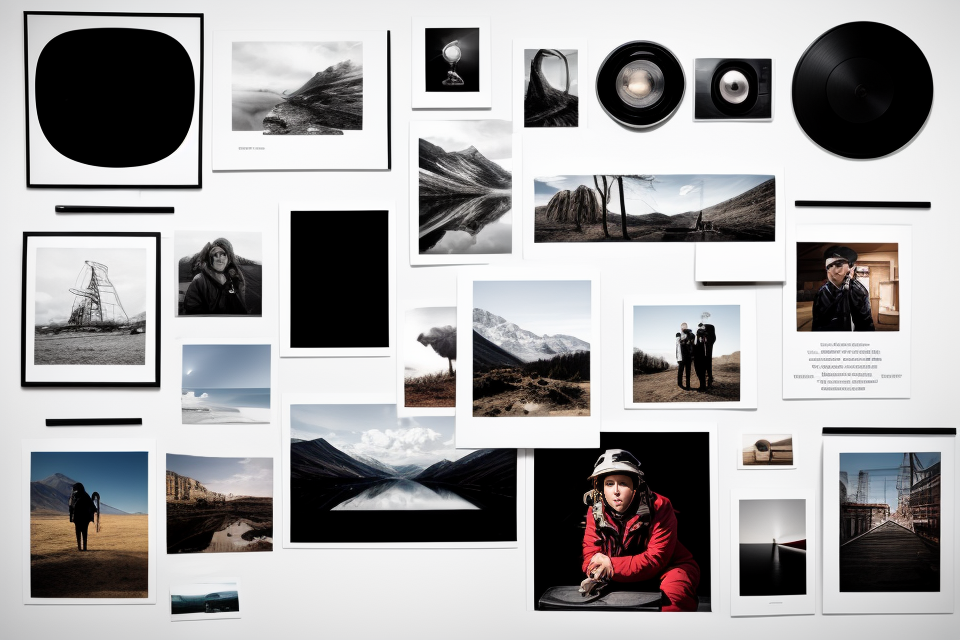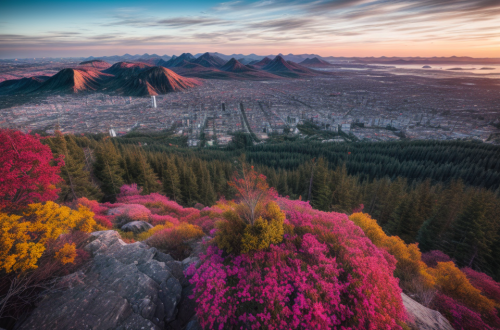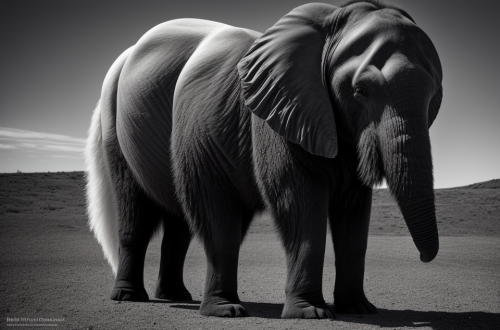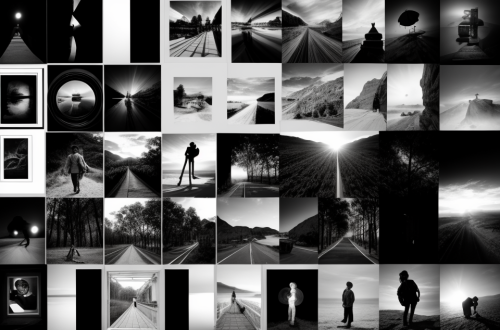Photography is an art form that has evolved over the years, and today, there are many different types of photography that exist. Each type of photography has its own unique characteristics, techniques, and styles. In this comprehensive guide, we will explore the four main types of photography, including their history, techniques, and popularity. From landscape to portrait photography, each type has its own distinct features that make it stand out. So, whether you’re a beginner or an experienced photographer, this guide will help you understand the different types of photography and how to capture the perfect shot.
Introduction to Photography Styles
Brief Overview of Photography Styles
Photography is an art form that encompasses various styles and techniques. The following is a brief overview of the four main types of photography:
Documentary Photography
Documentary photography is focused on capturing real-life events, people, and situations. The purpose of this style is to document and expose social, political, or environmental issues. It is an objective and unbiased form of photography that seeks to present the truth through visual storytelling.
Fine Art Photography
Fine art photography is a creative and subjective form of photography that aims to express the artist’s personal vision and emotions. It often involves staging and manipulating the image to convey a message or evoke a mood. Fine art photographers use a variety of techniques, including digital manipulation, to create unique and thought-provoking images.
Landscape Photography
Landscape photography captures the beauty and majesty of nature. It focuses on the relationship between the subject and its surroundings, and often features natural elements such as mountains, forests, and oceans. Landscape photographers aim to create images that evoke a sense of awe and wonder, and that inspire a connection with the natural world.
Portrait Photography
Portrait photography captures the essence and personality of an individual or group. It involves posing the subject and using lighting, composition, and other techniques to create a compelling and authentic image. Portrait photographers aim to reveal the subject’s true self and to convey their character and personality through the photograph.
The Importance of Understanding Photography Styles
Understanding the different types of photography is crucial for photographers to fully harness the power of their cameras and to effectively communicate their message through their images. By understanding the various styles of photography, photographers can make informed decisions about the techniques and tools they use, and can create images that are tailored to their intended audience.
In addition, knowing the different types of photography can help photographers to develop their own unique style and voice, and to stand out in a crowded and competitive field. Whether you are a professional photographer or a hobbyist, understanding the different types of photography can help you to take your skills to the next level and to create stunning and impactful images.
Types of Photography
Definition and Characteristics of Landscape Photography
Landscape photography is a type of photography that captures the beauty of nature, such as mountains, valleys, rivers, forests, and oceans. It is a popular form of photography that is often used to create images that are used as wallpapers, postcards, and in travel brochures.
The characteristics of landscape photography include:
- It is a type of art that is used to capture the beauty of nature.
- It often features natural elements such as mountains, valleys, rivers, forests, and oceans.
- It is a type of photography that requires careful planning and execution.
- It often requires the photographer to work in different lighting conditions and weather conditions.
- It requires the photographer to have a good understanding of composition, light, and color.
Tips for Capturing Stunning Landscape Photographs
- Use a wide-angle lens to capture the entire scene.
- Shoot during the golden hour or blue hour for the best light.
- Look for unique and interesting angles to shoot from.
- Use a tripod to keep the camera steady and avoid camera shake.
- Consider shooting in black and white to emphasize the texture and form of the landscape.
- Look for patterns and textures in the landscape, such as the shape of clouds or the texture of rocks.
- Consider shooting during different times of the day and different times of the year to capture different moods and atmospheres.
- Be patient and take your time to set up the shot and wait for the right light and conditions.
Definition and Characteristics of Portrait Photography
Portrait photography is a type of photography that captures the likeness, personality, and mood of an individual or group. It is an art form that involves creating a visual representation of a person or a group of people, often through the use of lighting, composition, and posing techniques. Portrait photography can be done in various settings, such as in a studio, on location, or even in the subject’s home.
The main objective of portrait photography is to capture the essence of the subject and create an image that tells a story about them. Portrait photographs are often used for personal or professional purposes, such as for passports, identification cards, social media profiles, or marketing materials.
Tips for Taking Exceptional Portrait Photographs
- Prepare the subject: Before taking a portrait photograph, it is important to prepare the subject by discussing their preferences and expectations for the shoot. This can include their clothing, hairstyle, and overall appearance. It is also important to establish a comfortable and relaxed atmosphere to help the subject feel at ease during the shoot.
- Choose the right location: The location for a portrait photograph can greatly impact the overall look and feel of the image. Consider the surrounding environment, lighting, and background to ensure that it complements the subject and enhances their features.
- Experiment with lighting: Lighting is a crucial element in portrait photography, as it can create different moods and effects. Experiment with different lighting techniques, such as natural light, artificial light, and mixed lighting, to achieve the desired look for the portrait.
- Pay attention to composition: Composition is essential in portrait photography, as it can create a visually pleasing image that draws the viewer’s attention to the subject. Consider the rule of thirds, leading lines, and the placement of the subject within the frame to create a dynamic and balanced composition.
- Capture the personality: The ultimate goal of portrait photography is to capture the essence of the subject’s personality. Use body language, facial expressions, and posing techniques to convey the subject’s unique personality and create an image that truly represents them.
Still Life Photography
Definition and Characteristics of Still Life Photography
Still life photography is a type of photography that involves the artistic arrangement of inanimate objects, typically in a studio setting. It is a form of photography that captures the beauty and intricacies of everyday objects, and often highlights their textures, shapes, and colors. The main objective of still life photography is to create a visually compelling image that tells a story or conveys a message.
Tips for Capturing Beautiful Still Life Images
- Lighting: Lighting is crucial in still life photography. It is important to have a good understanding of light and how it interacts with objects. This can be achieved by experimenting with different light sources, such as natural light, artificial light, and flash.
- Composition: Composition is another important aspect of still life photography. It is important to consider the placement of objects within the frame, and how they relate to each other. This can be achieved by experimenting with different arrangements, angles, and perspectives.
- Focus: Focus is crucial in still life photography. It is important to ensure that the main subject of the image is in focus, while the background is deliberately blurred. This can be achieved by using a shallow depth of field, or by using a focusing rail or tilt-shift lens.
- Post-processing: Post-processing is an essential part of still life photography. It is important to enhance the image’s color, contrast, and overall appearance. This can be achieved by using photo editing software such as Adobe Photoshop or Lightroom.
- Creativity: Creativity is the key to still life photography. It is important to think outside the box and experiment with different ideas and concepts. This can involve using unusual objects, unconventional lighting techniques, or creative compositions.
Overall, still life photography is a fascinating and rewarding type of photography that requires patience, creativity, and attention to detail. By following these tips, you can capture beautiful still life images that will inspire and captivate your audience.
Street Photography
Definition and Characteristics of Street Photography
Street photography is a type of photography that captures candid images of people and their surroundings in public places. It is an art form that focuses on the everyday life of people and the urban environment. The genre of street photography has been around since the early days of photography and has continued to evolve and thrive to this day.
Tips for Capturing Authentic Street Photographs
- Pay attention to the light: Light is a crucial element in street photography. It can create mood, atmosphere, and add depth to your images. Look for interesting light patterns, shadows, and reflections to make your images more dynamic.
- Be aware of your surroundings: Street photography is all about capturing candid moments. Be aware of your surroundings and look for interesting subjects, scenes, and moments to capture.
- Use a wide-angle lens: A wide-angle lens is ideal for street photography as it allows you to capture a wider field of view and capture more of the scene.
- Be discreet: Street photography is often seen as intrusive, so it’s important to be discreet and respectful of your subjects. Try to capture images from a distance or use a long lens to avoid drawing attention to yourself.
- Experiment with different angles: Street photography is not just about capturing images from eye level. Experiment with different angles, such as low or high angles, to add interest and creativity to your images.
- Edit your images: Editing is an important part of street photography. It can help you to enhance the mood and atmosphere of your images and make them more impactful. Experiment with different editing styles to find what works best for you.
Recap of the Four Main Types of Photography
In the world of photography, there are four main types that every photographer should be familiar with. These types of photography include landscape, portrait, still life, and documentary photography.
- Landscape Photography is all about capturing the beauty of nature, whether it’s a grand vista or a simple scene. Landscape photographers often use wide-angle lenses to capture as much of the scene as possible, and they may use techniques like long exposures to create dramatic effects.
- Portrait Photography is focused on capturing the essence of a person or group of people. Portrait photographers use lighting, posing, and composition to create a unique image that captures the subject’s personality and mood.
- Still Life Photography is the art of capturing inanimate objects in a way that tells a story or conveys a message. Still life photographers use lighting, composition, and color to create an image that is both visually appealing and emotionally evocative.
- Documentary Photography is a form of storytelling that captures real-life situations and events. Documentary photographers often work on projects that highlight social, political, or environmental issues, and they use their images to bring attention to these issues and effect change.
By understanding these four main types of photography, photographers can develop their skills and find their own unique style. Whether you’re a beginner or an experienced photographer, it’s important to have a solid understanding of these types of photography in order to take your work to the next level.
Final Thoughts on Understanding Photography Styles
In conclusion, understanding the different types of photography is crucial for any photographer, whether they are a beginner or an experienced professional. Each type of photography has its own unique style, techniques, and equipment requirements, and mastering them can help photographers to capture stunning images and express their creativity.
It is important to note that photography is a constantly evolving art form, and there are many other sub-genres and styles within each of the main types of photography. Photographers should feel free to experiment and explore different techniques and styles to find their own unique voice and approach to photography.
Additionally, it is important to remember that photography is not just about capturing a perfect image, but also about the process of creation and the emotions and stories behind each photograph. By understanding the different types of photography, photographers can develop a deeper appreciation for the art form and the endless possibilities it offers.
FAQs
1. What are the four main types of photography?
The four main types of photography are landscape photography, portrait photography, still life photography, and documentary photography.
2. What is landscape photography?
Landscape photography is a type of photography that captures the beauty of nature, including mountains, forests, beaches, and other natural landscapes. The goal of landscape photography is to capture the mood and atmosphere of a particular place and to showcase its natural beauty.
3. What is portrait photography?
Portrait photography is a type of photography that captures the likeness and personality of a person or group of people. The goal of portrait photography is to create a flattering and accurate representation of the subject, while also capturing their unique personality and character.
4. What is still life photography?
Still life photography is a type of photography that captures inanimate objects, such as food, flowers, or household items. The goal of still life photography is to create a composition that is visually appealing and that highlights the beauty and intricacies of the objects being photographed.
5. What is documentary photography?
Documentary photography is a type of photography that captures real-life events and situations, often with the goal of raising awareness about social, political, or environmental issues. Documentary photographers often work to tell a story or convey a message through their photographs.





